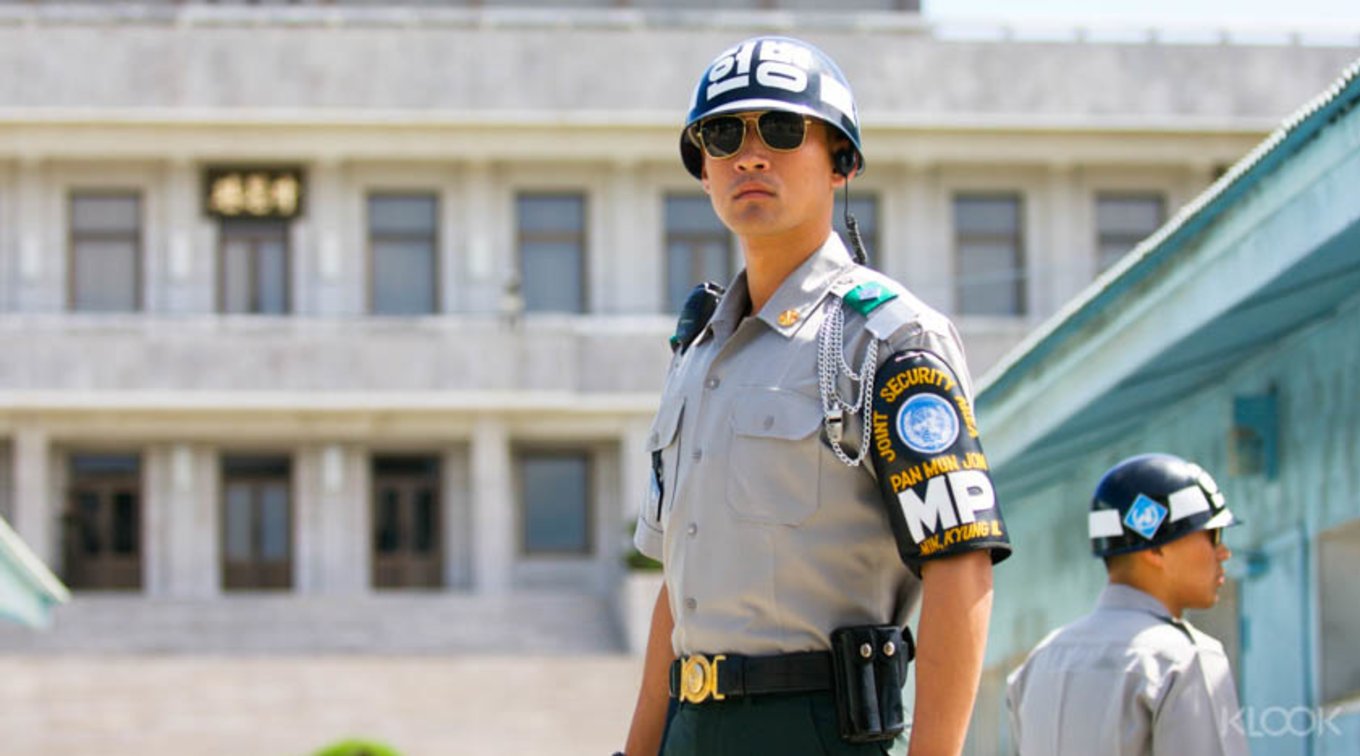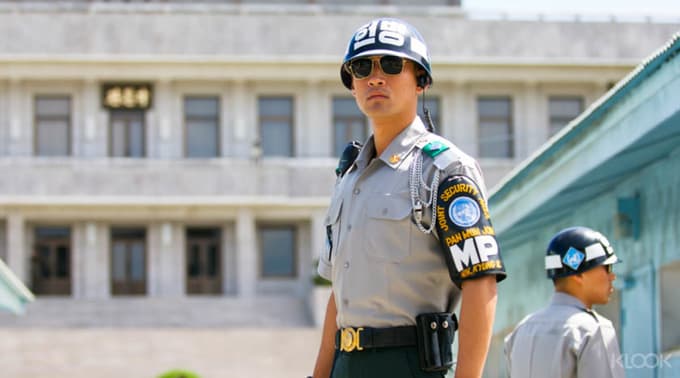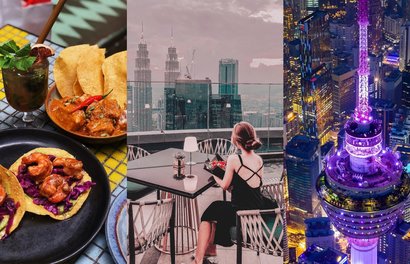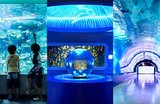Have you wondered what North Korea is really like? With the DMZ Tour, you have a chance to peek into North Korea. Attracting 7.9 million tourists, the DMZ zone is one of the most heavily militarized regions in the world but also offers great insight into North Korea and Korean War history.
What is DMZ?
DMZ stands for demilitarized zone. Established in 1953 at the cease-fire of the Korean War, the DMZ represents the area 2 km north and south from the Military Demarcation Line. In DMZ, civilization access is limited, ensuring the safety of visitors. More importantly, uninhibited by people, this area preserves valuable ecology and historical attractions.
Difference between DMZ and JSA?
Before digging into the attractions, one differentiation should be made. Some people use the words DMZ and JSA interchangeably, they actually carry different meanings. JSA is short for Joint Security Area, commonly known as Panmunjom. Panmunjom sits at the western portion of DMZ. At JSA, the truce was officially signed, making JSA the only area out of district boundaries of North and South Korea. Till today, Panmunjom remains to be a place of dialogue between the two countries. When the term DMZ is used in the context of booking tours, it usually refers to DMZ tour exclusively and JSA tour likewise, unless the name states both tours.
Things to see?
Heart of the action during the Korean War, DMZ offers rich historical sightseeing. Imjingak Park, Third Tunnel, Freedom House, and Bridge of No Return namely have grown to become the most popular spots.
Imjingak Park
Imjingak Park holds significant sentimental and symbolic meaning. This park commemorates families which are separated due to the division of the North and South. The park signifies the hope that one day unification would come. The park displays more than 400 exhibits about North Korea. Furthermore, families originally from North Korea come to the park’s Mangbaedan Alter to perform rituals on holiday.
The Third Tunnel
Discovered in 1978, the Third Tunnel is one of the four tunnels found underneath the DMZ, connecting North and South Korea. The Third Tunnel, or the Third Tunnel of Aggression, could move 30,000 soldiers through the tunnel in one hour. The tunnel served as an invasive route into the South. This tunnel provides a vivid imagery of the conflict between the North and the South.
Freedom House
Located in JSA, the Freedom House functions as a meeting place for North and South Korea. The facility helps the two sides to negotiate and communicate, holding offices of major organizations like the South and North Red Cross Liaison Office. This stop often starts the JSA tour, setting the tone of the interaction between North and South Korea.
Bridge of No Return
Bridge of No Return reminds visitors about the reality of war. As a site for many Prisoner of Wars (POWs) exchanges, this bridge received its name because once a POW crossed this bridge to leave South Korea and returned to North Korea, he cannot go backwards. For these soldiers, the bridge sealed their fates.
DMZ Tour Requirements?
The first thing to know, the requirements for JSA tour are stricter than those for DMZ tour. For DMZ tour, you only need to present your passport information when you book. However, for JSA, officials ask visitors from restricted countries to send a color photocopy of the photo page of their passports. These countries include Afghanistan, Algeria, Azerbaijan, Bahrain, Bangladesh, Belarus, Bolivia, Bosnia, Burma, China, Cuba, Egypt, Estonia, Georgia, Hong Kong, India, Indonesia, Iran, Iraq, Jordan, Kazakhstan, Kuwait, Kyrgyzstan, Latvia, Lebanon, Libya, Lithuania, Macau, Malaysia, Moldova, Morocco, Nigeria, North Korea, Oman, Pakistan, Palestinian authority, Qatar, Russia, Saudi Arabia, Singapore, Somalia, Sudan, Syria, Taiwan, Tajikistan, Tunisia, Turkmenistan, Ukraine, United Arab Emirates, Uzbekistan, Venezuela, Vietnam, Yemen. You should bring your passport on the day of the tour for both DMZ and JSA tours.
Kids?
JSA only permits children 11 or above to visit. The tour is not to be suitable for young children as tourists should not interact or approach from the North Korean side. Moreover, visitors should refrain from touching equipment in the meeting places. If you are traveling with a child below 11, you alternatively should consider the DMZ tour, which welcomes people of all ages.
Dress code?
While DMZ tour has no dress code, JSA imposes a dress code. Visitors should not wear casual clothing. Basically, when dressing for JSA tour, choose clothes that you would wear to meet your girlfriend’s or boyfriend’s grandparents for the first time. You probably would not wear ripped jeans, revealing clothing (like sleeveless shirts, mini skirts, shorts, exercise clothing, round neck t-shirts), and military-styled outfits. As a rule of thumb, avoid open-toed shoes and shaggy hair.
Photos?
Photos have integrated into our routines when we travel. If you are on the JSA tour, you may need to hold back your photo-frenzy instincts. Your camera’s zoom lenses should not extend to over-90mm zoom. Listen to your tour guide about where you can take photos and where you cannot.
How to Get There?
The only attraction accessible to the public without prior reservation is Imjingak Park. You must apply for a visa in advance to enter the Third Tunnel and JSA. Furthermore, JSA only accepts group tours, not individual travellers. Therefore, as you plan to visit JSA, book a tour early on! Many tours hire local Korean tour guides so if you do not speak Korean, read carefully to reserve a tour led by an English-speaking guide. For most tours, hotel pickup is available for your convenience.
To reach Imjingak Park by yourself, you can take the train or bus. By train, make your way to Musan Station on the Gyeongui Line. Then you can find the tour train that heads towards Dorasan Mountain and get off at Imjingang River station. By bus, you can board the red bus 9710, which starts at Seoul Station or Gwanghwamun Station. After arriving at Munsan Bus Terminal, take the city bus 58 and you will find the park at Imjingak Bus Stop.
Thrill or Fear?
DMZ tour can stir up feelings of thrill or fear. Depending on your preferences, you can adjust accordingly whether you should join the DMZ tour, JSA tour, or a combined tour. The requirements and sights will differ so pay close attention before you book! But if you follow your tour guide and instructions, there is no reason to fear; you will enjoy an educational once-in-a-lifetime opportunity to learn about one of the most talked about places in the world.













![[Updated] Complete List Of Official Nationwide MCO SOP 2021](https://res.klook.com/image/upload/fl_lossy.progressive,q_85/c_fill,w_160,h_104/v1633858858/blog/iso56uzsphmdguixkvzh.jpg)





![[Updated] Complete List Of Official Nationwide MCO SOP 2021](https://res.klook.com/image/upload/fl_lossy.progressive,q_85/c_fill,w_410,h_264/v1633858858/blog/iso56uzsphmdguixkvzh.jpg)







